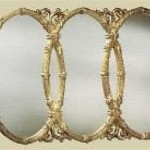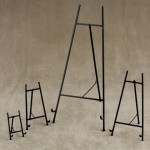What Hooks To Use To Hang A Heavy Mirror
Hanging a heavy mirror requires careful consideration of the appropriate hardware to ensure the mirror remains securely mounted and does not pose a safety risk. Selecting the right type of hook, considering wall material, and understanding weight limits are essential steps in the process. This article will explore various types of hooks suitable for heavy mirrors, factors to consider when choosing a hook, and instructions for proper installation techniques.
Understanding Wall Types and Their Weight-Bearing Capacity
The type of wall onto which the mirror will be hung significantly influences the choice of hook. Different wall materials possess varying weight-bearing capacities, and selecting the correct hook is crucial for distributing the mirror's weight appropriately. The most common types of walls encountered in residential and commercial buildings include drywall, plaster, and solid walls such as concrete or brick.
Drywall, also known as gypsum board, is a widely used wall material due to its ease of installation and affordability. However, drywall alone has a limited weight-bearing capacity. Hanging heavy items like mirrors directly onto drywall without proper support can lead to the wallboard crumbling and the mirror falling. Drywall anchors or fasteners that distribute the weight over a larger surface area are necessary for hanging heavier mirrors.
Plaster walls provide a slightly stronger surface than drywall, but they can still be prone to cracking and crumbling if overloaded. Older plaster walls may be particularly fragile. Similar to drywall, plaster walls require the use of appropriate anchors for safely hanging heavy mirrors. The type of anchor used will depend on the condition and thickness of the plaster.
Solid walls, such as concrete or brick, offer the most robust support for heavy items. These walls have a significantly higher weight-bearing capacity compared to drywall or plaster. However, hanging items on concrete or brick requires specialized drilling techniques and the use of masonry anchors designed to grip the solid material. Proper installation is essential to ensure the anchor is securely embedded and can withstand the mirror's weight.
Types of Hooks and Hanging Hardware for Heavy Mirrors
A variety of hooks and hanging hardware are available, each designed for specific wall types and weight capacities. Selecting the appropriate hardware is paramount for safely and securely mounting a heavy mirror. Some of the most common types of hooks and hardware include:
D-Rings and Wire: This is a conventional method used on many mirrors. D-rings are metal loops attached to the back of the mirror frame, and a wire is strung between them. The wire is then hung on a hook secured to the wall. While this setup can work for lighter mirrors, it is not recommended for heavy mirrors. The wire can stretch or break over time, increasing the risk of the mirror falling. Furthermore, the single point of contact on the wall (the hook) may not be sufficient to distribute the weight adequately, especially on drywall or plaster walls.
Heavy-Duty Picture Hooks: These hooks are designed to support heavier items than standard picture hooks. They often feature multiple small nails that distribute the weight across a wider area. While they can be suitable for moderately heavy mirrors on drywall, it's crucial to check the weight rating of the specific hook and ensure it exceeds the weight of the mirror by a significant margin. For heavier mirrors, these hooks may still not provide sufficient support.
Drywall Anchors: Drywall anchors are designed to provide a secure hold in drywall by expanding or gripping the wallboard. Several types of drywall anchors are available, including:
Plastic Anchors: These are among the simplest and least expensive anchors. They are inserted into a pre-drilled hole and expand when a screw is inserted. Plastic anchors are generally suitable for lighter mirrors, but they lack the strength and holding power required for heavy mirrors.
Self-Drilling Anchors: These anchors have a sharp point that allows them to be screwed directly into drywall without the need for a pre-drilled hole. They typically have a wider thread that grips the drywall more effectively than plastic anchors. Self-drilling anchors can be suitable for moderately heavy mirrors, but it's important to check the weight rating and ensure they are properly installed.
Toggle Bolts: Toggle bolts are considered one of the strongest types of drywall anchors. They consist of a bolt with a hinged "toggle" that folds flat for insertion into a pre-drilled hole. Once through the wall, the toggle springs open, creating a wide anchor that distributes the weight over a large area. Toggle bolts are an excellent choice for hanging heavy mirrors on drywall, providing a secure and reliable hold.
Molly Bolts: Molly bolts, also known as expansion anchors, are another good option for drywall and plaster walls. They are inserted into a pre-drilled hole, and a setting tool or screwdriver is used to expand the anchor behind the wall. This creates a strong, permanent hold. Molly bolts are particularly useful for situations where the mirror will be hung permanently and a very secure attachment is required.
Wall Studs: Wall studs are vertical beams that run inside the walls of a building. They provide the strongest and most secure support for hanging heavy items. If possible, locating a wall stud and attaching the mirror directly to it is the ideal solution. A stud finder can be used to locate the studs within the wall. Screws or nails driven directly into a stud will provide a much stronger hold than any type of drywall anchor.
Z-Bar Hangers: Z-bar hangers, also called French cleats, offer a secure and aesthetically pleasing method for hanging heavy mirrors. They consist of two interlocking metal strips: one attached to the back of the mirror and the other to the wall. The angled design of the strips allows the mirror to be easily lifted onto the wall-mounted strip, creating a flush and secure fit. Z-bar hangers distribute the weight evenly across the wall and are an excellent choice for large, heavy mirrors.
Key Considerations When Choosing a Hook
Selecting the right hook for hanging a heavy mirror involves carefully considering several factors, including the mirror's weight, the wall type, and the desired aesthetic.
Weight of the Mirror: Accurately determining the weight of the mirror is the first and most crucial step. Use a bathroom scale or postal scale to weigh the mirror. Once the weight is known, select a hook or hanging system with a weight rating that significantly exceeds the mirror's weight. A general rule of thumb is to choose hardware with a weight rating at least twice the weight of the mirror to provide a safety margin.
Wall Material: As previously discussed, the wall material is a primary factor in determining the appropriate type of hook. Drywall and plaster require anchors for added support, while solid walls like concrete or brick necessitate specialized drilling techniques and masonry anchors. For drywall or plaster, toggle bolts or molly bolts are generally recommended for heavy mirrors. For stud walls, screws or nails directly into the stud provides the most secure support.
Aesthetic Considerations: The chosen hardware should not only be functional but also aesthetically pleasing. Some hooks, like Z-bar hangers, offer a clean and flush appearance, while others may be more visible. Consider the style of the mirror and the overall decor of the room when selecting the hardware. If the hardware will be visible, choose a finish that complements the mirror and the surrounding environment.
Ease of Installation: The complexity of the installation process is another important consideration. Some hooks and anchors are relatively easy to install with basic tools, while others require more specialized tools and expertise. If unfamiliar with DIY projects, seeking professional assistance may be advisable to ensure the mirror is safely and securely hung.
Future Adjustments: Consider whether the mirror will need to be easily adjusted or removed in the future. Some hanging systems, like Z-bar hangers, allow for easy removal and re-hanging, while others, like molly bolts, are more permanent. Choose a system that meets current and future needs.
Before any installation, test the chosen hook or anchor’s capacity. If possible, hang the mirror on the selected hardware temporarily, and observe to see if there is any sign of the hook or anchor beginning to fail. This test, while not conclusive, can provide an indication of the safety of the chosen method.
Always consult professional guidelines and manufacturer instructions before installing any hardware. Following safety precautions and using appropriate tools are essential for ensuring a successful and secure mirror hanging experience.

How To Hang Heavy Mirrors Frames Without Nails 3m

Best Alternatives To Wall Hooks Picture Hanging Systems

Heavy Picture Mirror Hanging Kit 50 Kg

How To Hang A Heavy Mirror Or Picture True Value

Heavy Duty Steel Safety Picture Frame Mirror Canvas Hooks 15kg S Sisi Ltd

How To Hang A Large Or Heavy Mirror

How To Hang A Mirror With Pictures Wikihow

Picture Wire Strung Between Two D Rings Attached To The Back Of A Frame Hanging Mirror Heavy Installation

How To Hang A Heavy Mirror With Pictures Wikihow

Heavy Duty J Picture Hooks Wall Hanger Frame Mirror Hanging








